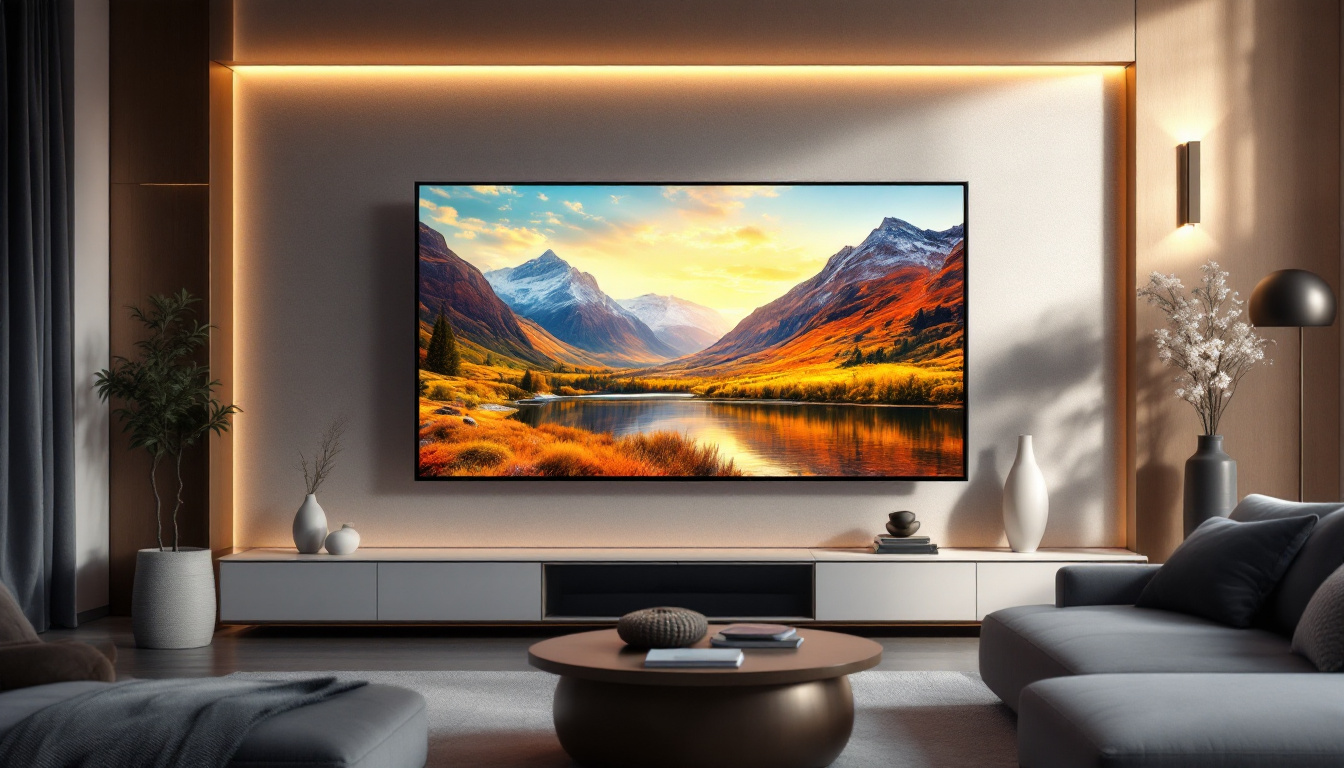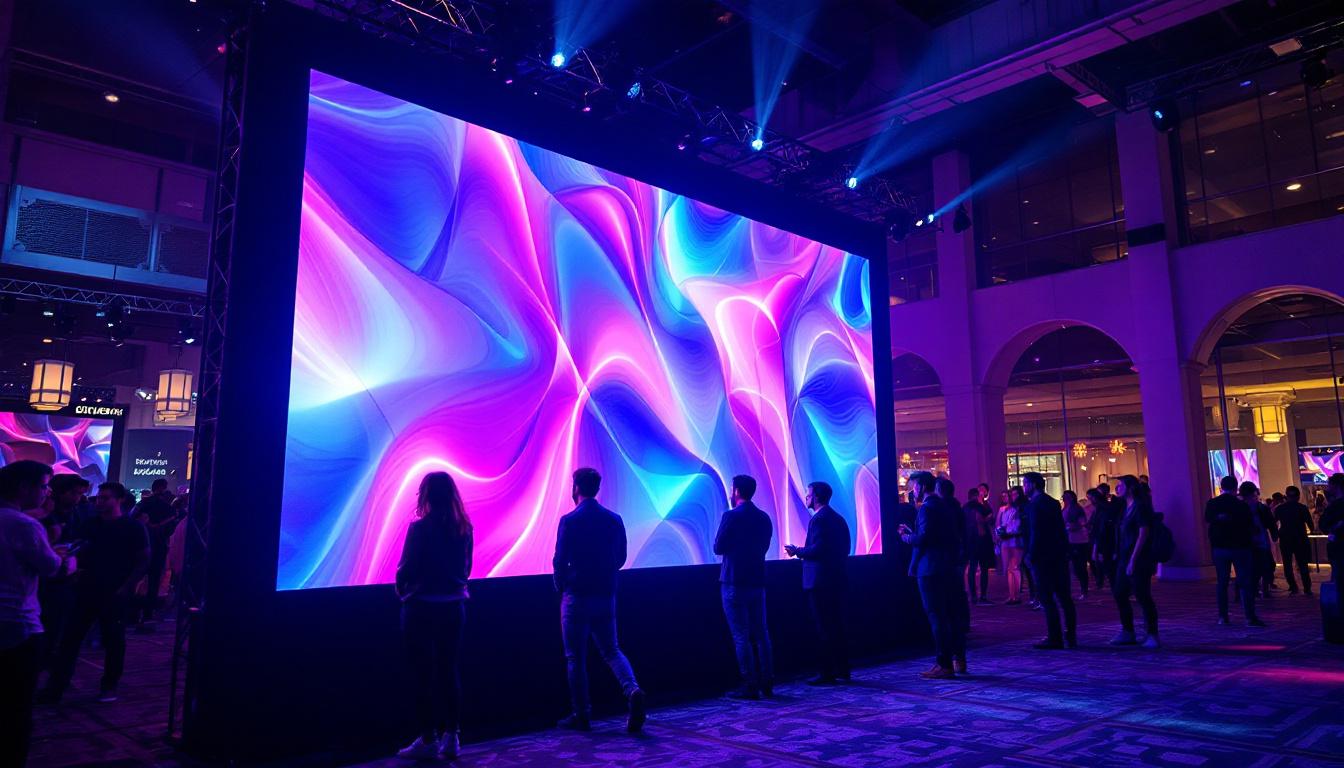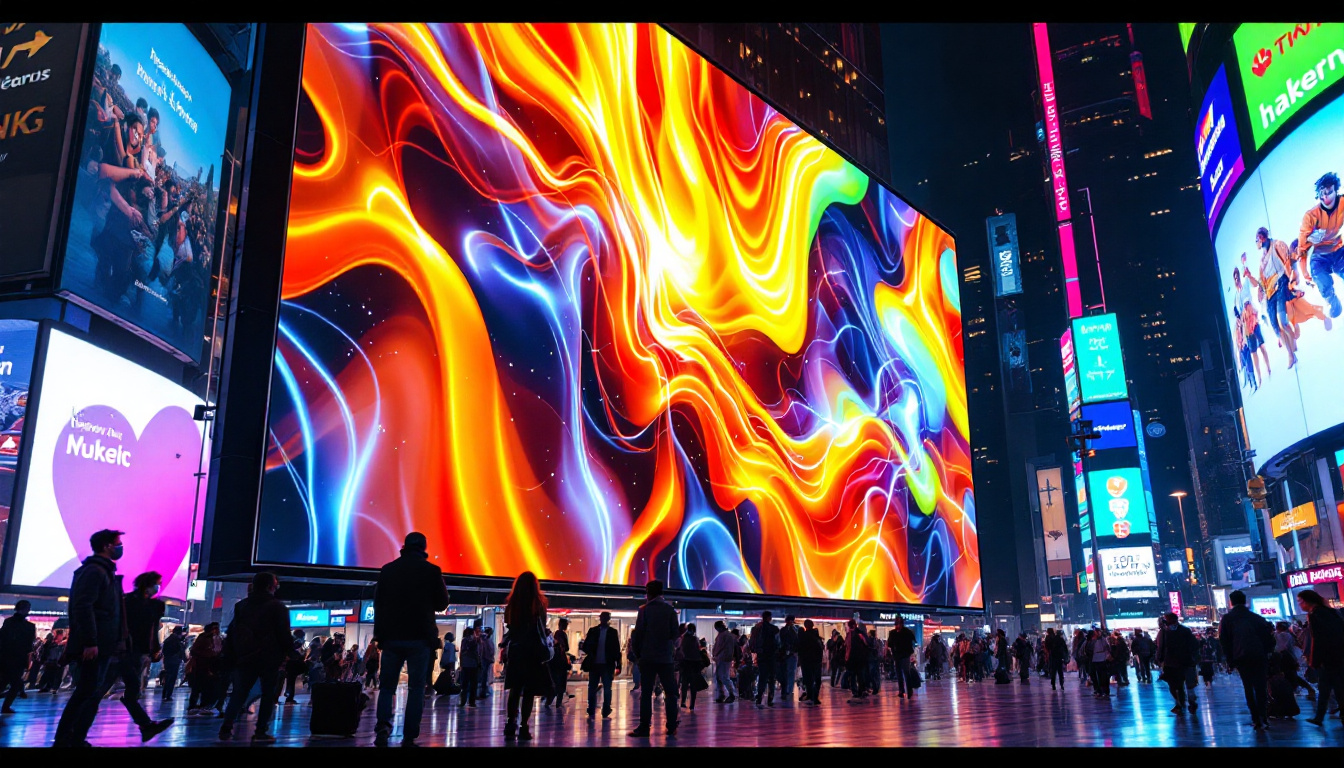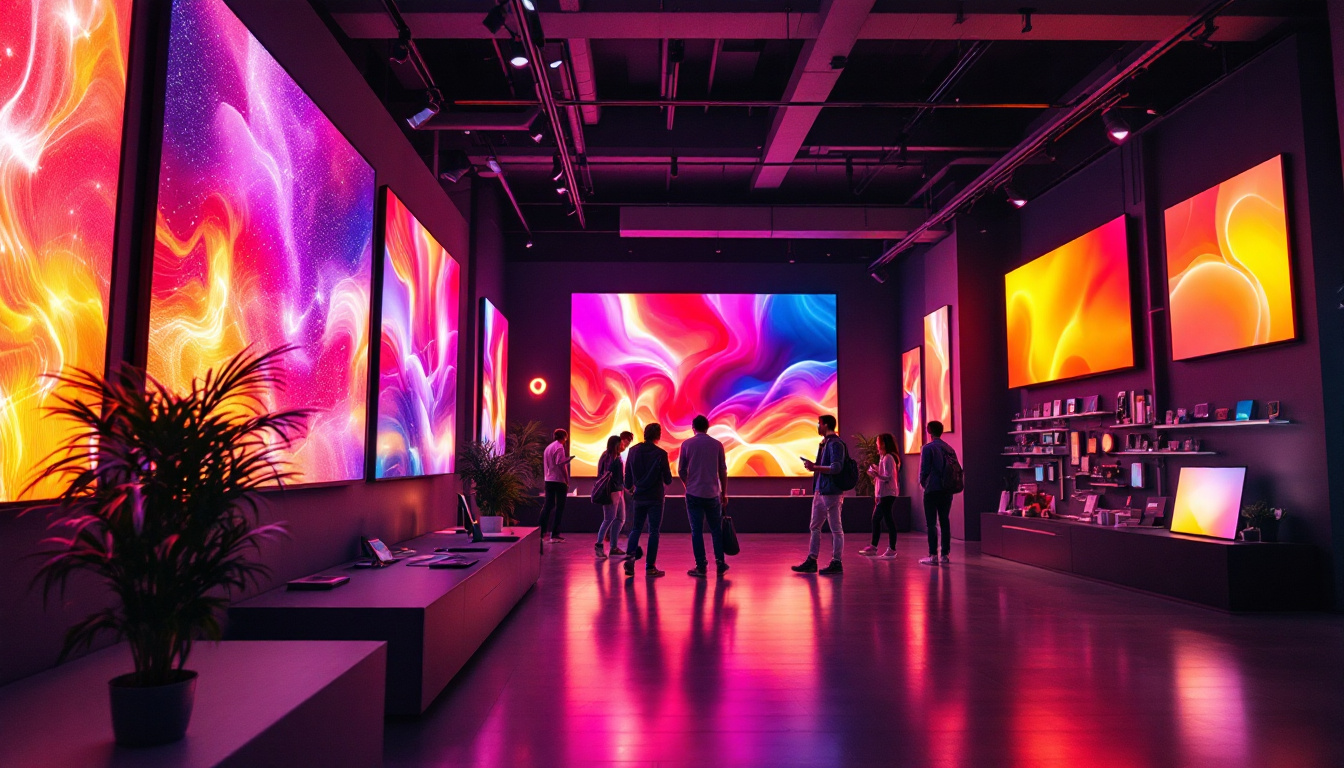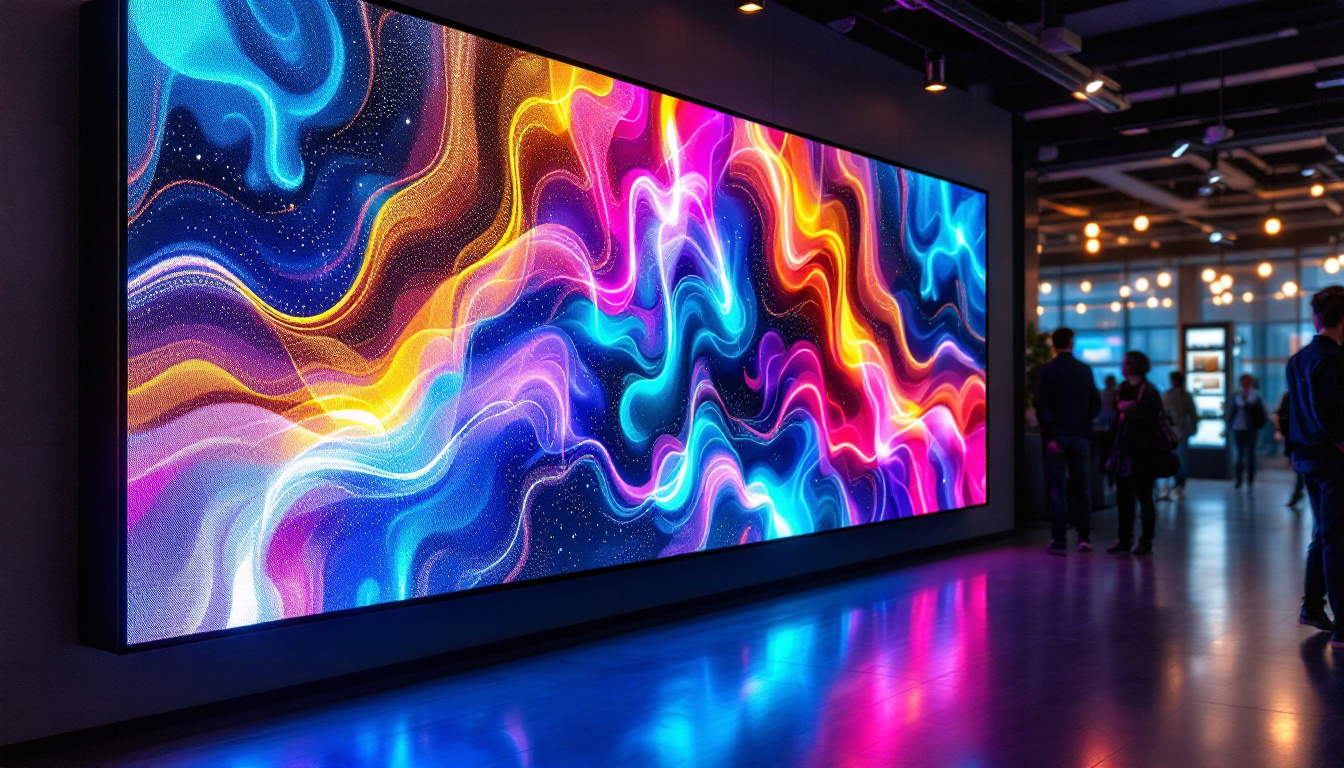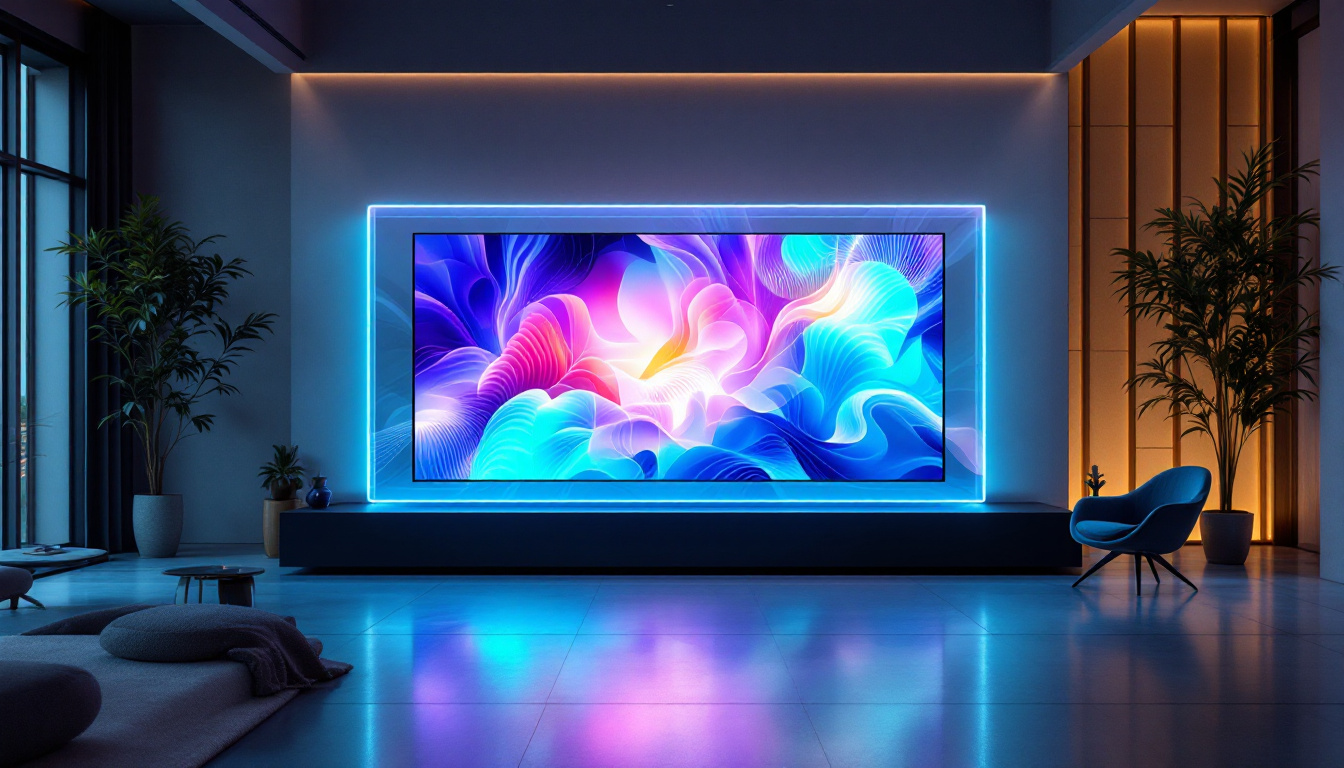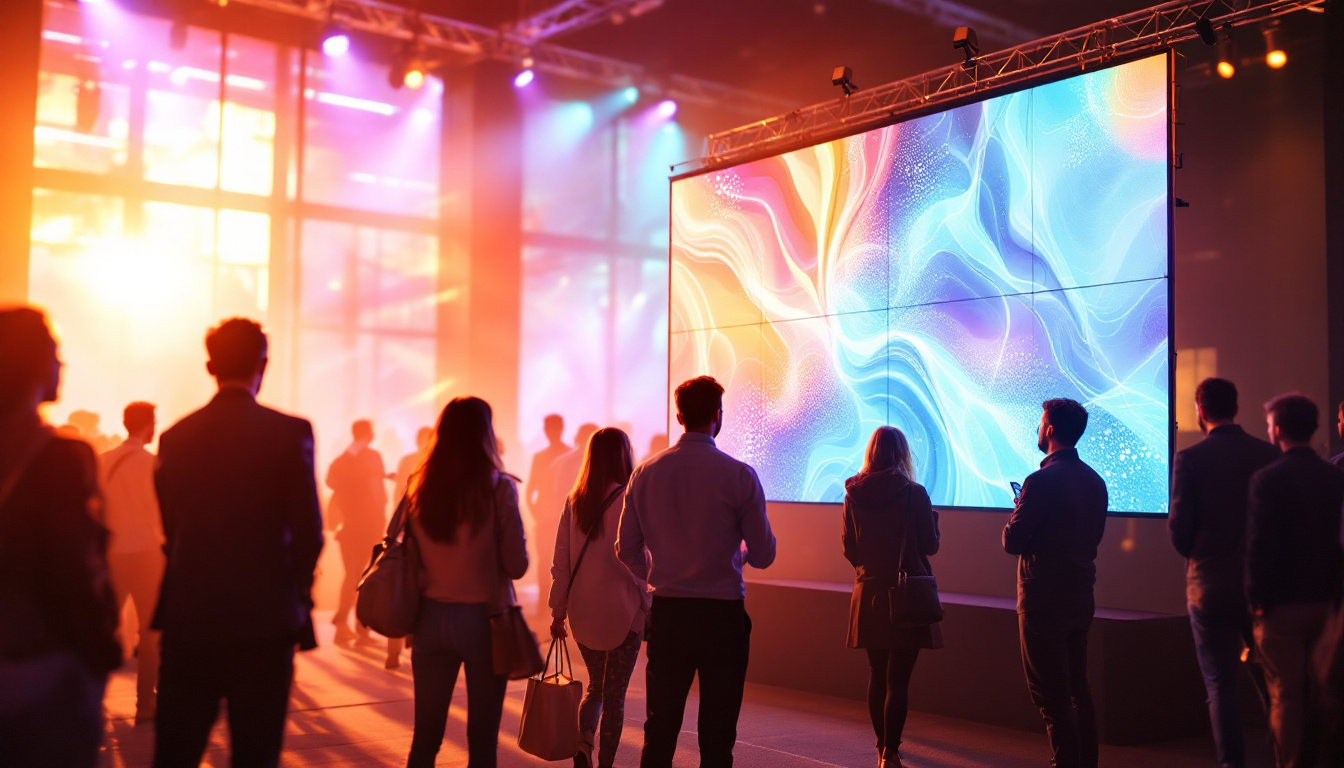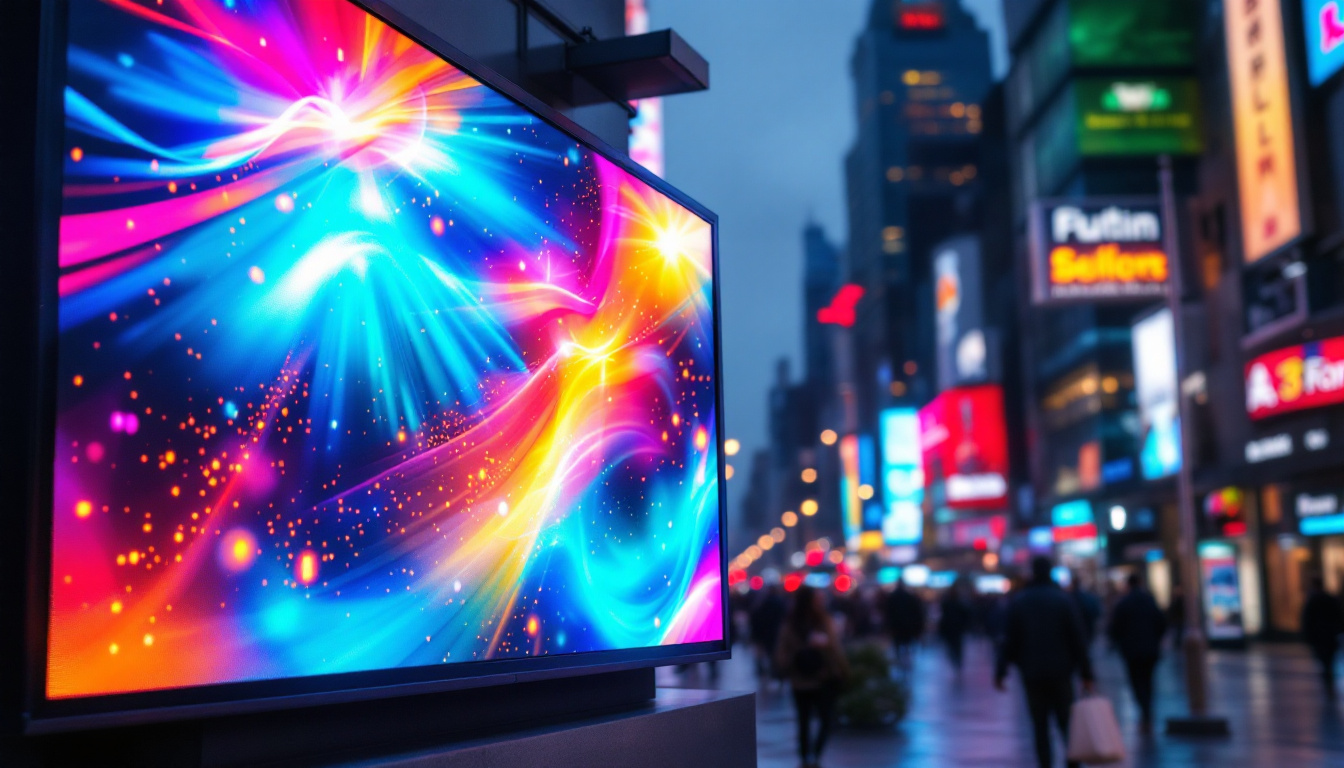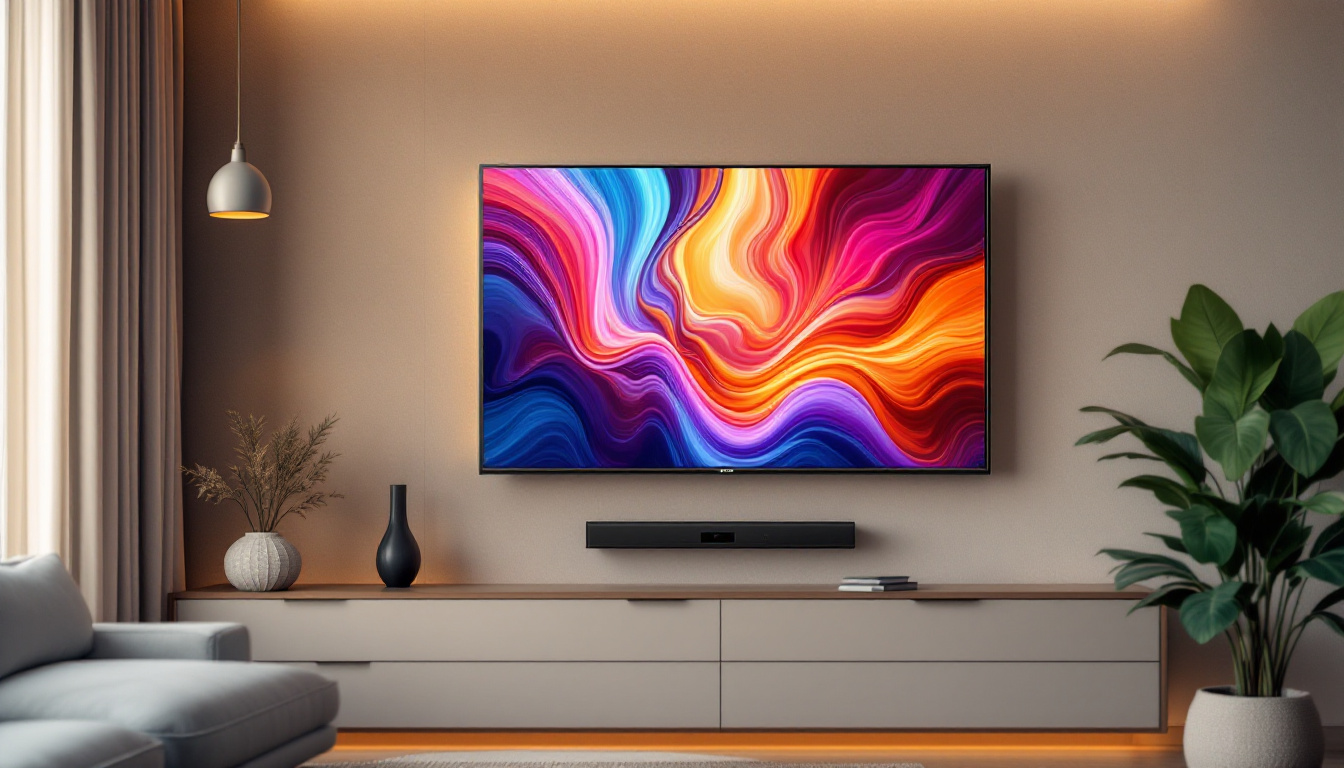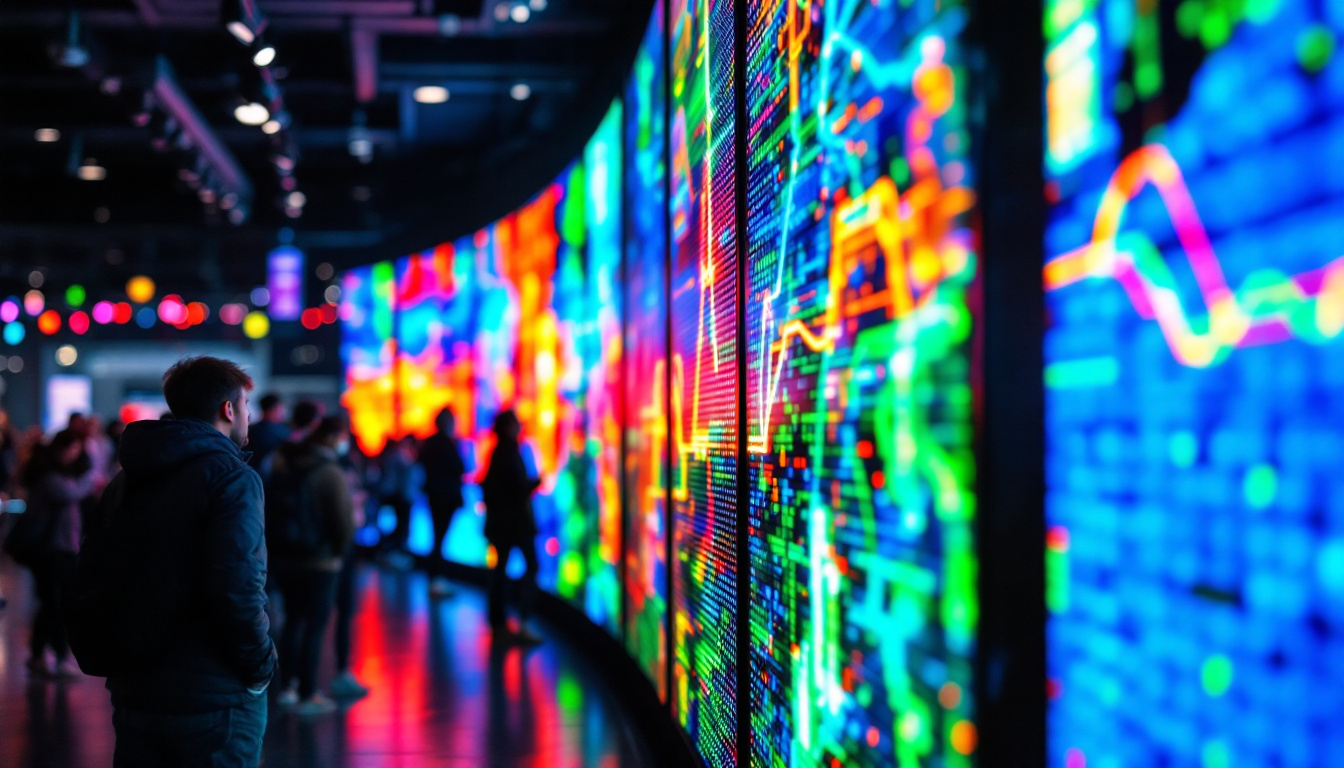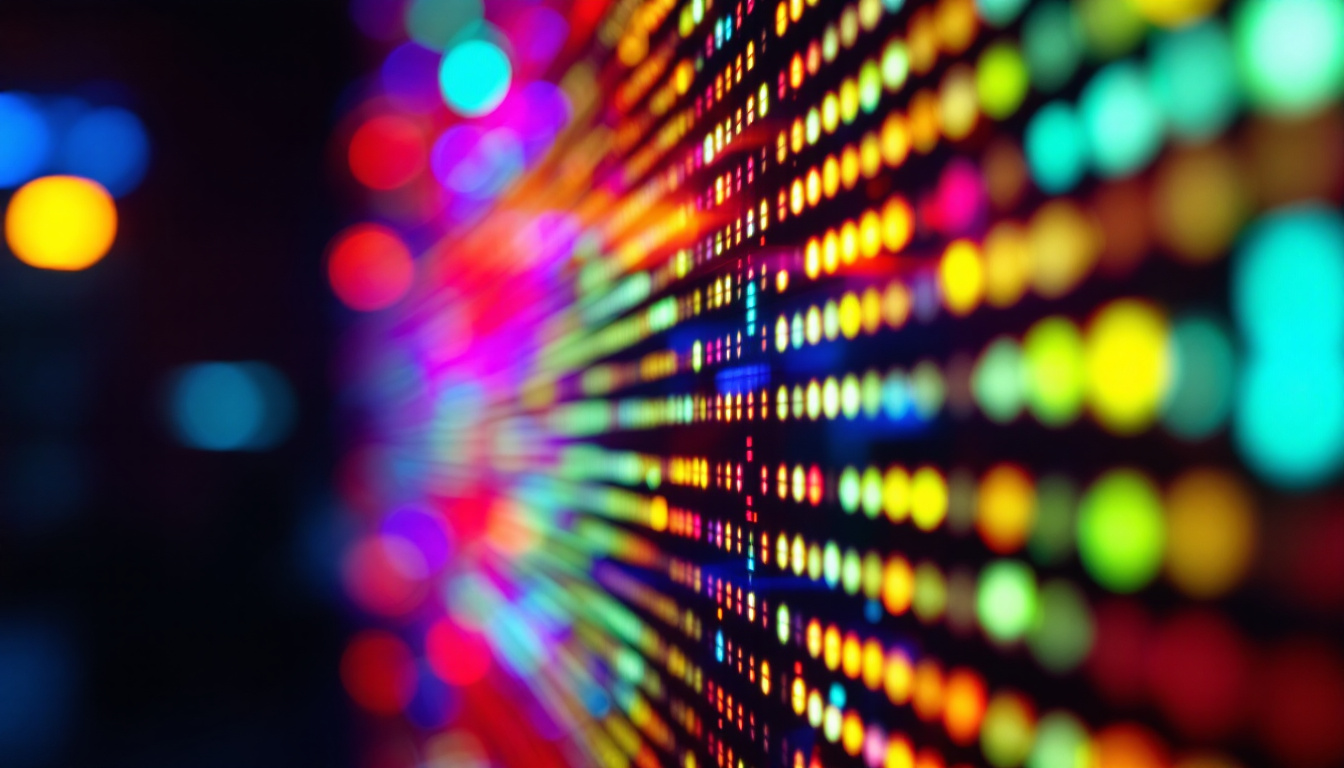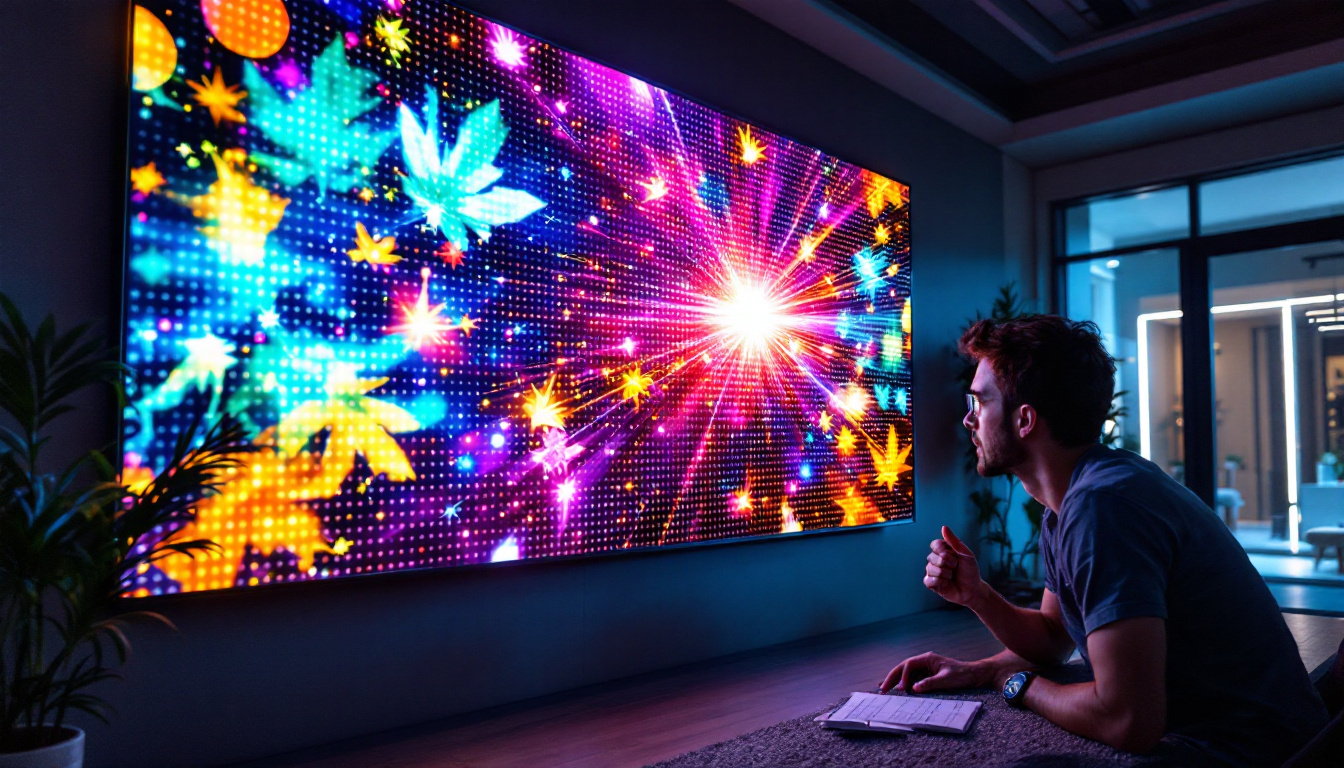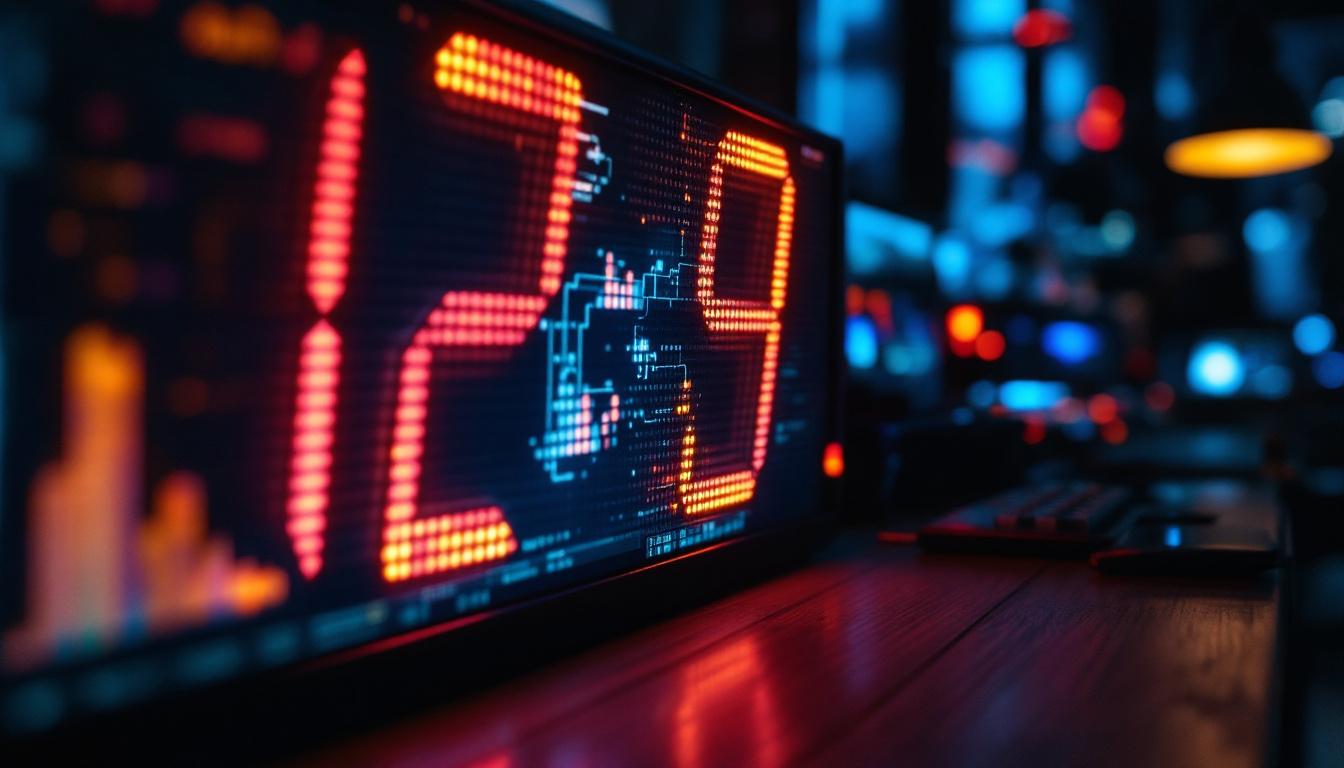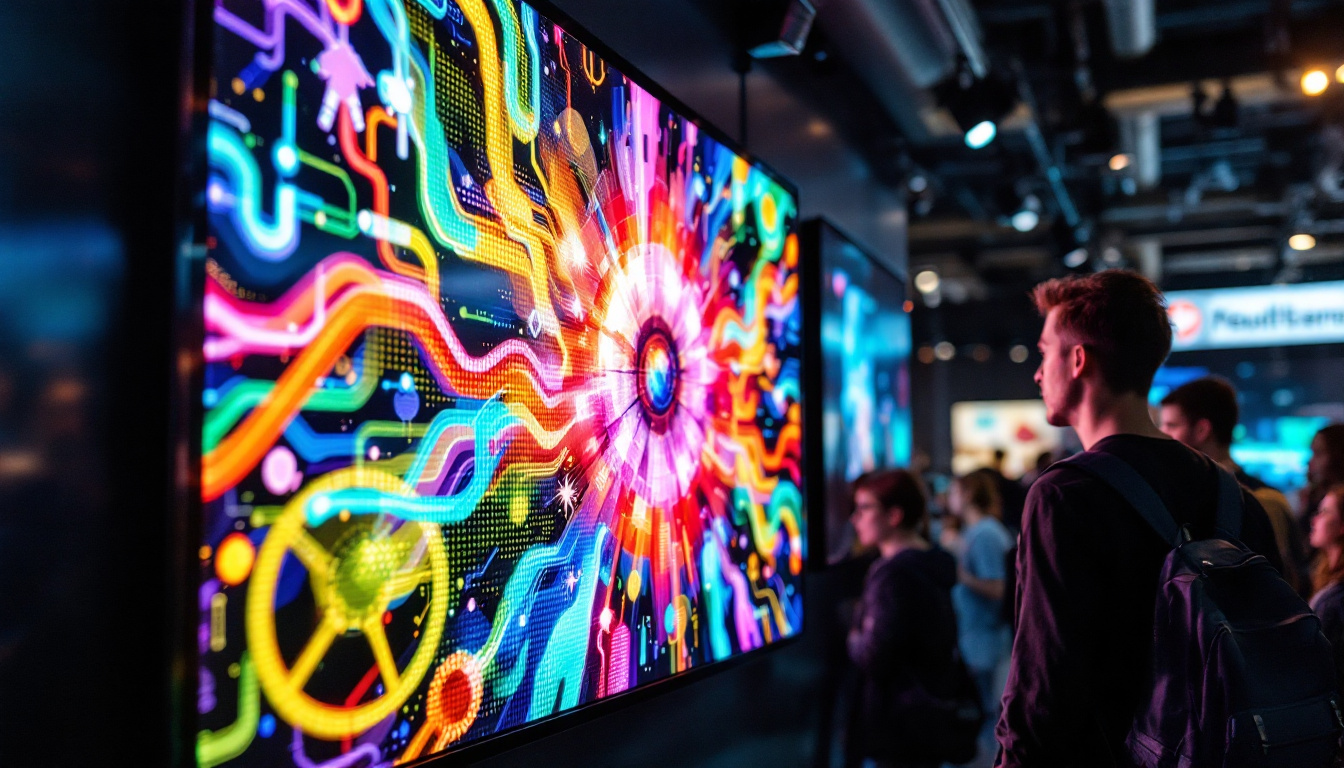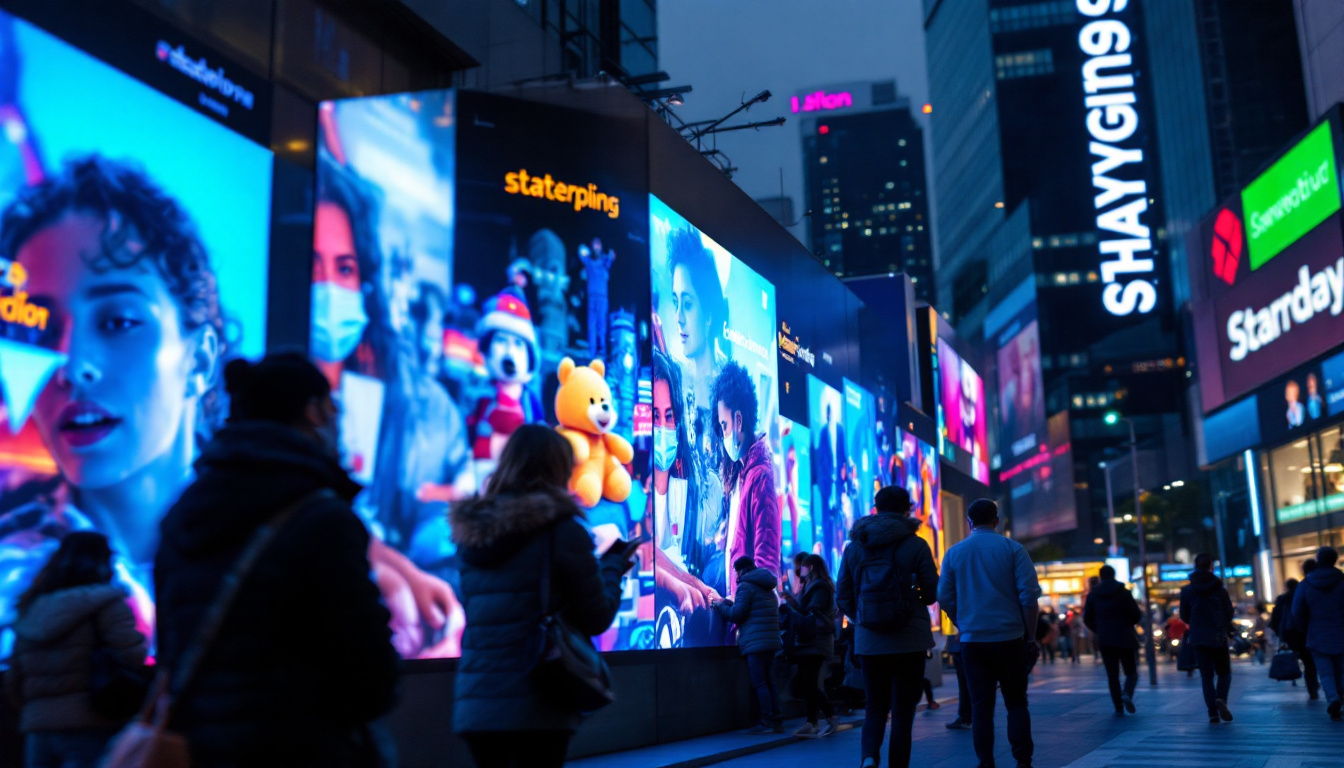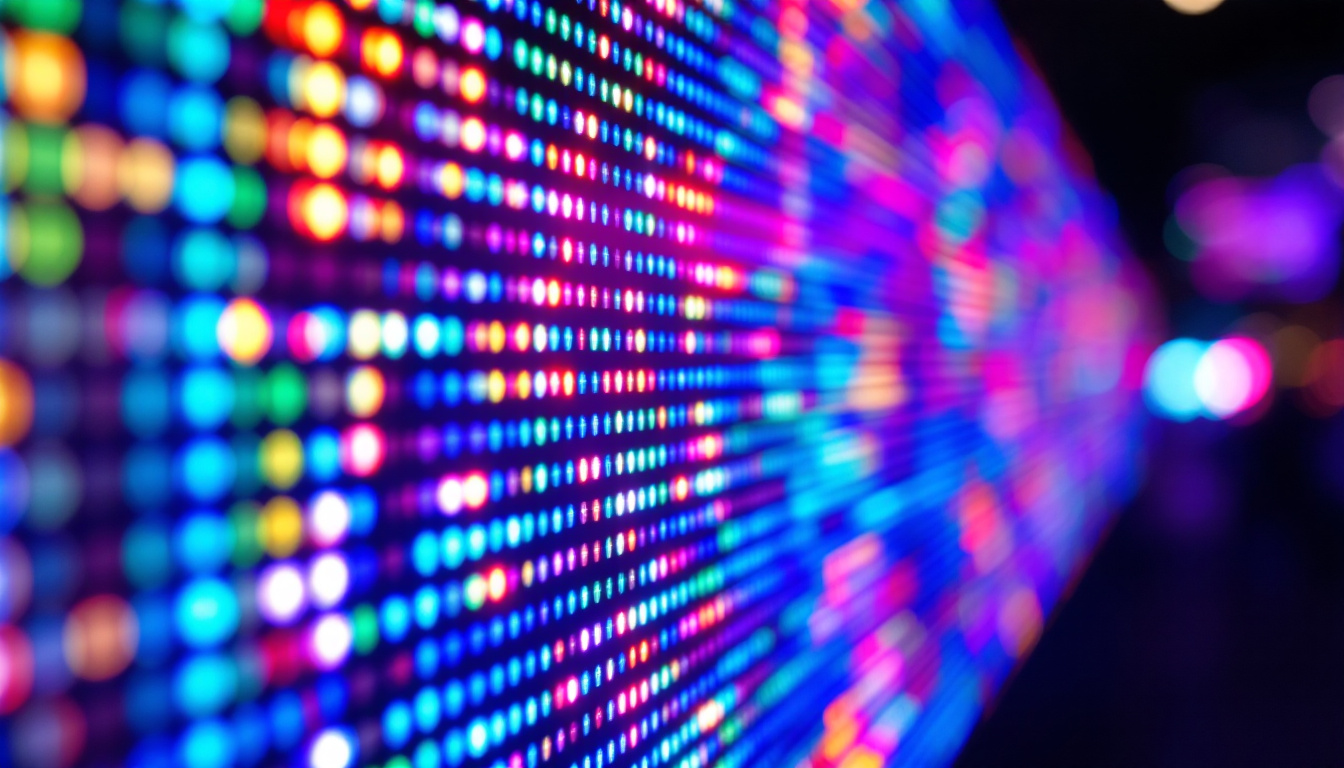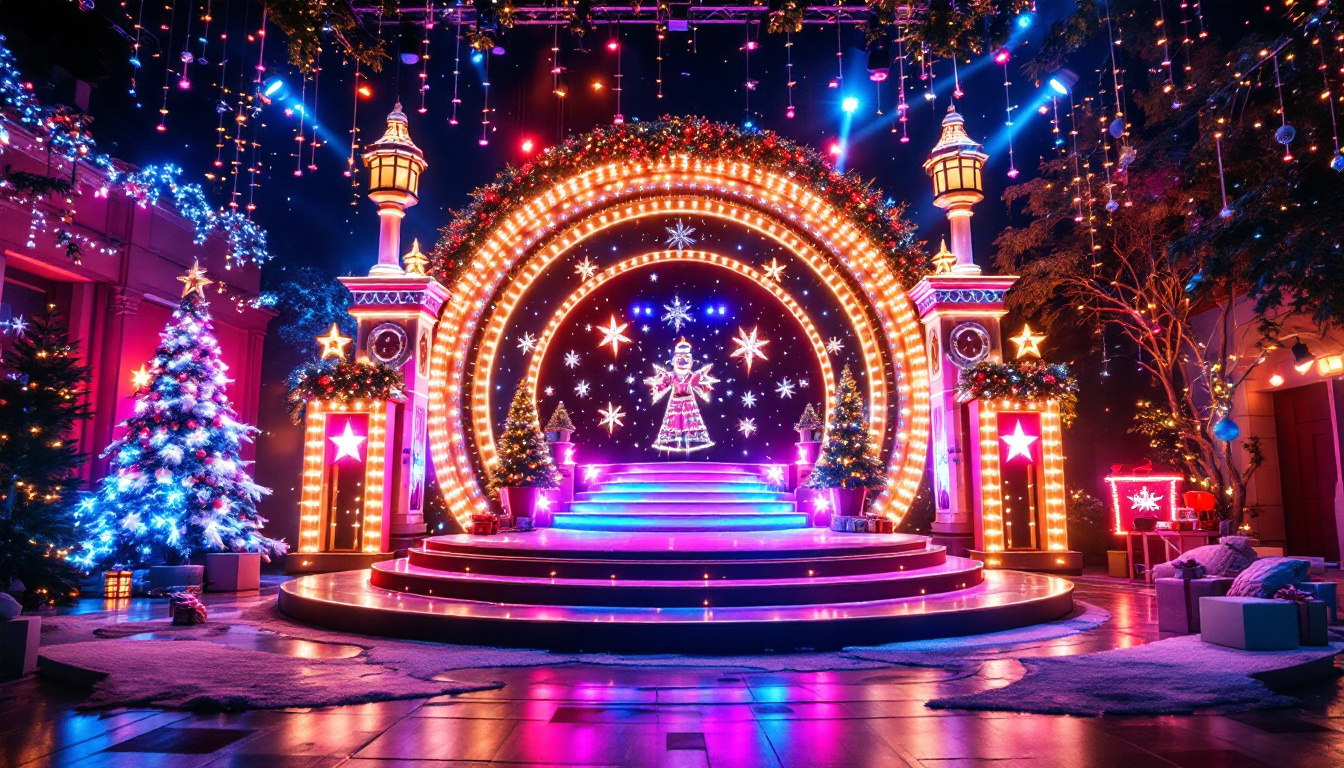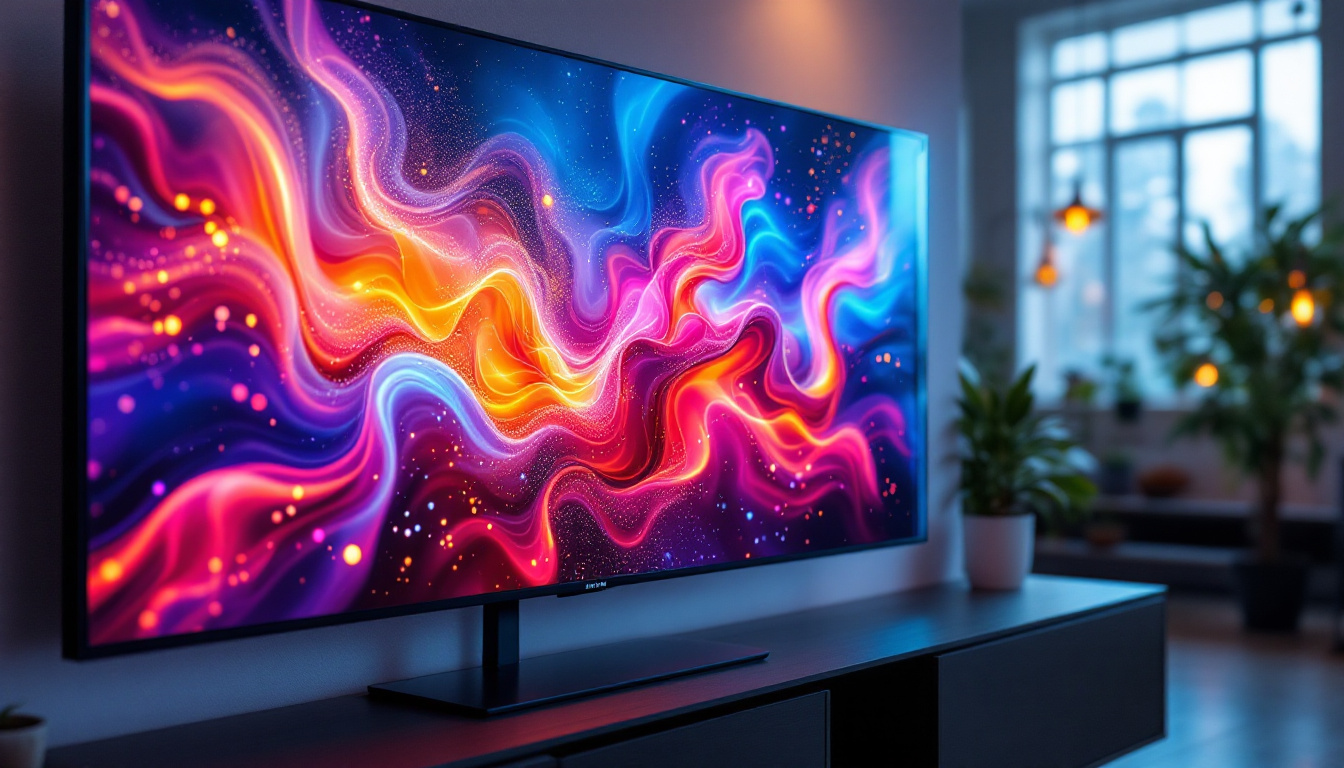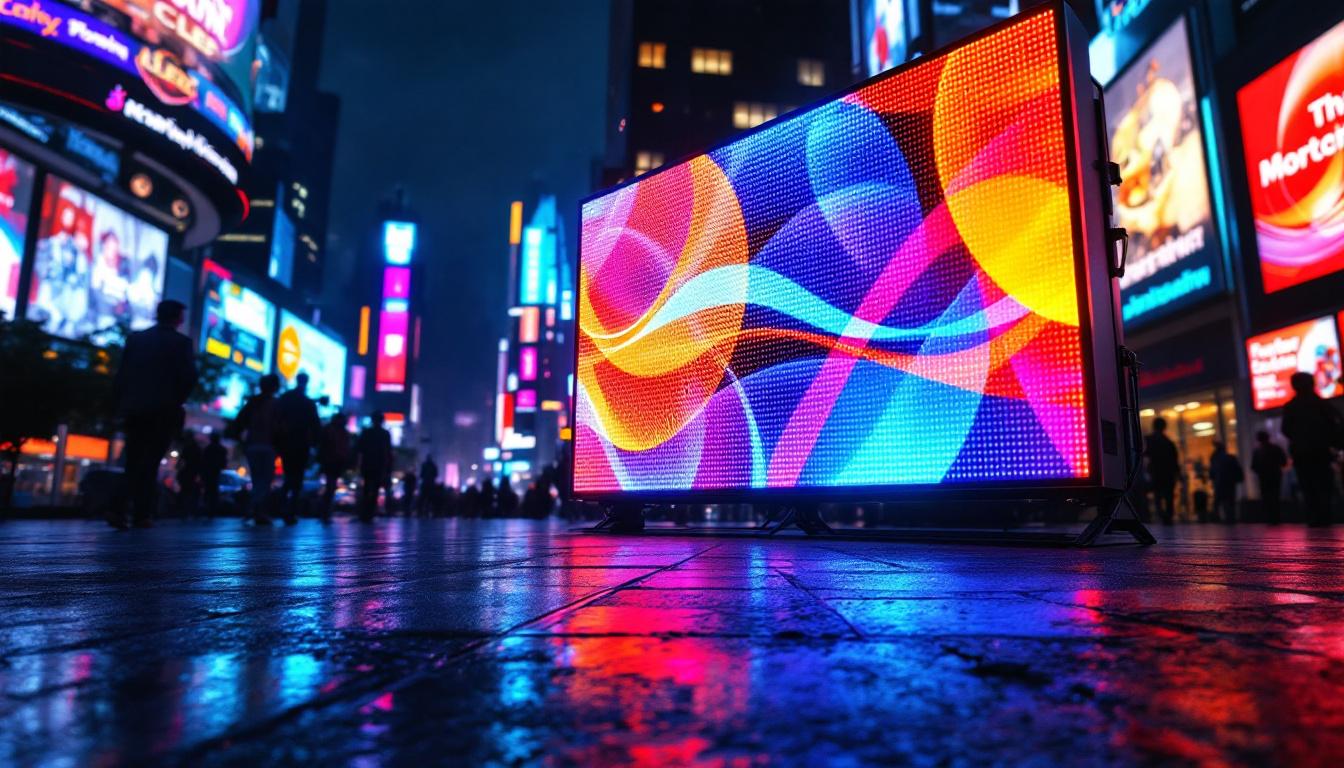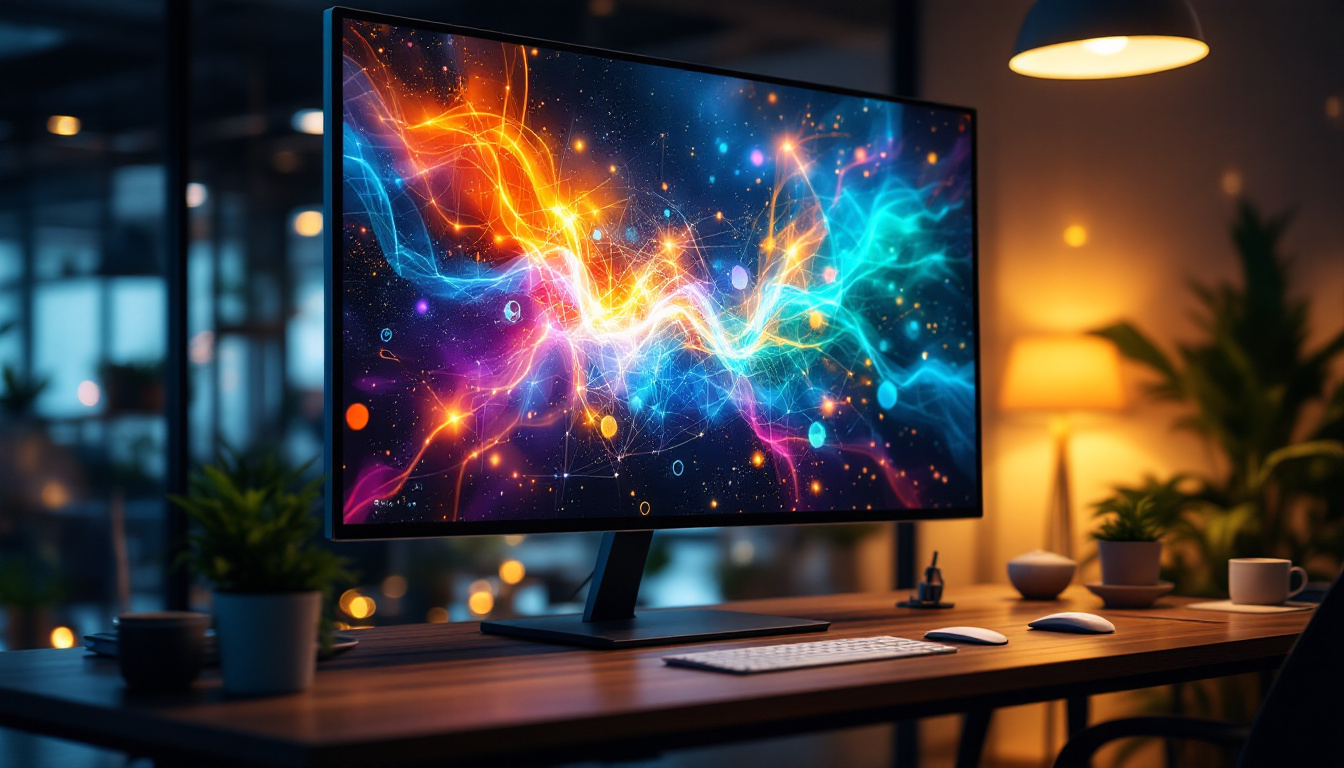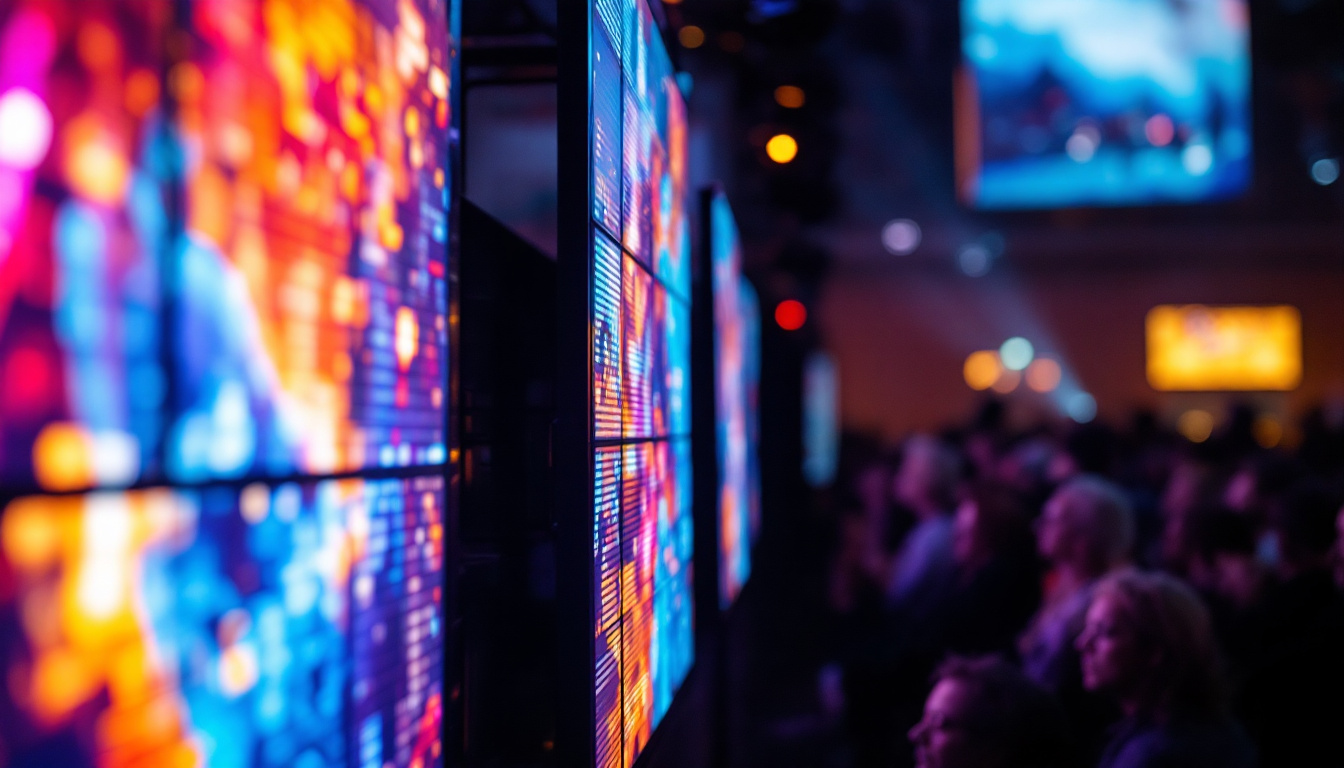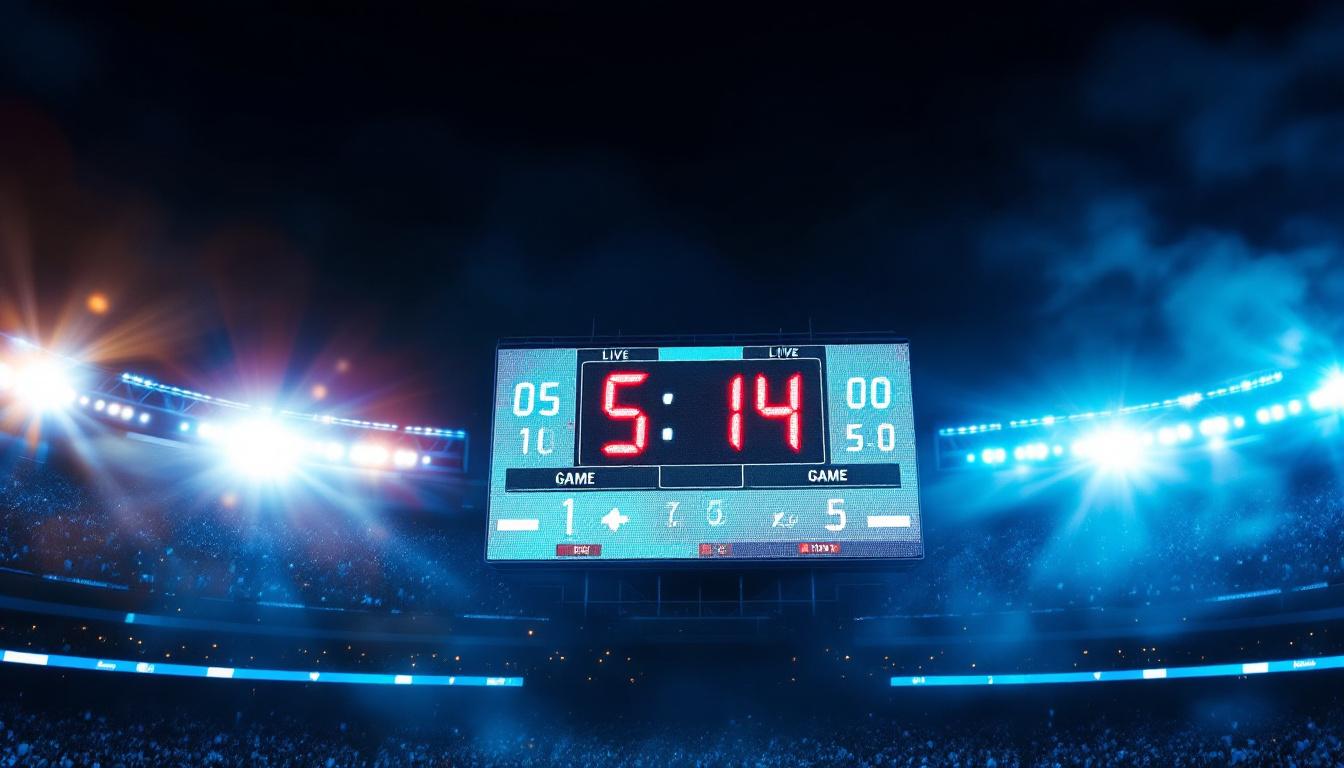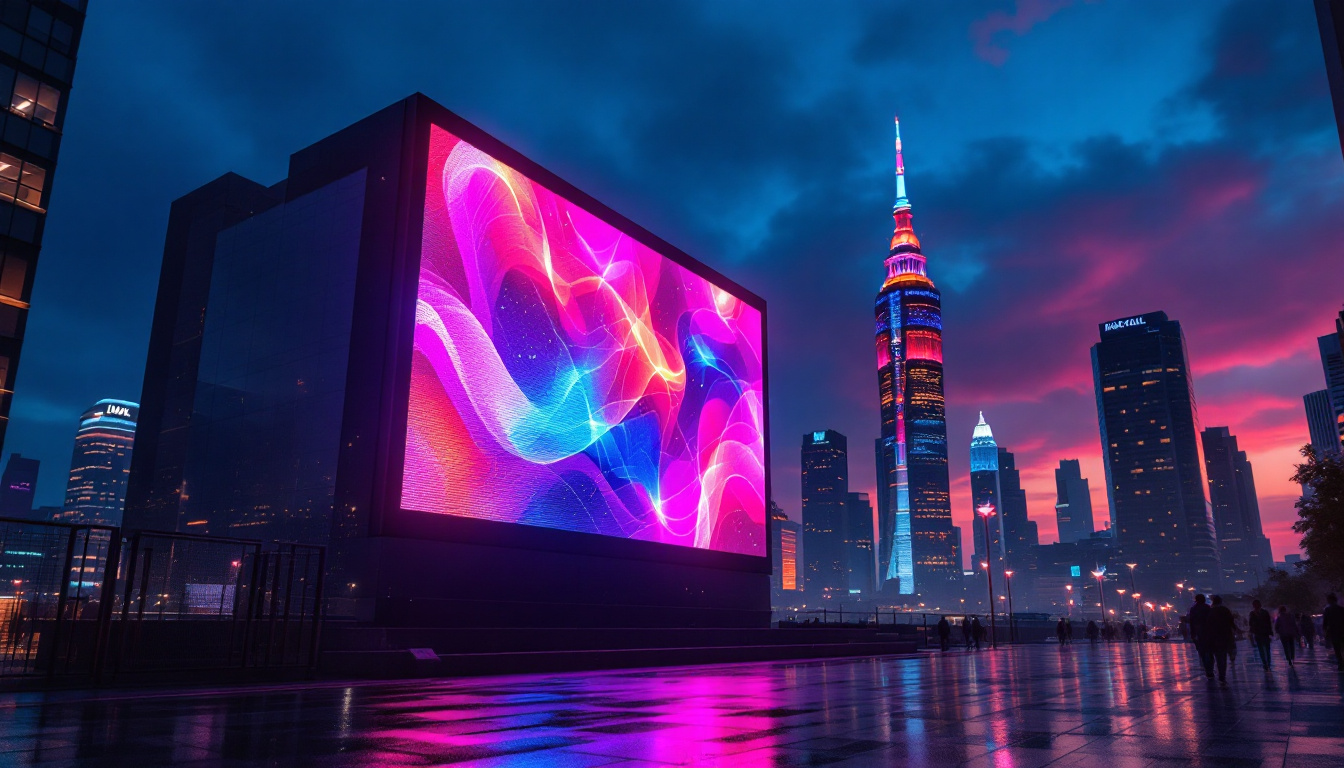In the fast-paced world of retail and exhibitions, vendor display stands play a crucial role in attracting customers and showcasing products effectively. Among the various types of display stands available, LED displays have gained significant popularity due to their vibrant visuals and dynamic capabilities. This article delves into the intricacies of LED display stands, exploring their benefits, types, and best practices for implementation.
Understanding LED Displays
LED displays, or Light Emitting Diode displays, utilize semiconductor technology to produce light and create images. These displays are known for their brightness, energy efficiency, and versatility, making them ideal for various applications, including vendor display stands.
How LED Displays Work
At the core of an LED display is a matrix of tiny light-emitting diodes. Each diode can emit different colors when an electrical current passes through it. By combining these diodes in various configurations, manufacturers can create full-color images and videos. The resolution of an LED display is determined by the density of these diodes, measured in pixels per inch (PPI).
The technology behind LED displays allows for high contrast ratios and vibrant colors, which are essential for grabbing the attention of potential customers. Additionally, advancements in LED technology have led to the development of flexible and transparent displays, further expanding their application in vendor stands. These innovations enable vendors to create eye-catching, dynamic displays that can adapt to various environments and design requirements, enhancing the overall customer experience.
Benefits of Using LED Displays
One of the primary advantages of LED displays is their ability to deliver stunning visuals that can significantly enhance the overall appeal of a vendor stand. The brightness of LED screens ensures that content remains visible even in well-lit environments, making them ideal for trade shows and busy retail spaces.
Moreover, LED displays are energy-efficient compared to traditional display technologies. They consume less power while providing superior brightness, which can lead to cost savings in the long run. Additionally, the longevity of LED technology means that vendors can rely on their displays for extended periods without frequent replacements. This durability is particularly beneficial in high-traffic areas where displays may be subjected to wear and tear, allowing vendors to maintain a polished and professional appearance without the constant need for updates or repairs.
Furthermore, LED displays offer a range of customization options, allowing vendors to tailor their content to specific audiences or events. With the ability to easily update graphics, animations, and messages in real-time, businesses can respond to changing market conditions or promotional opportunities instantly. This adaptability not only maximizes engagement but also ensures that the displayed content remains relevant and appealing, ultimately driving customer interaction and boosting sales.
Types of LED Displays for Vendor Stands
When it comes to selecting an LED display for a vendor stand, various types cater to different needs and preferences. Understanding these types can help vendors make informed decisions that align with their marketing goals.
Fixed LED Displays
Fixed LED displays are designed for permanent or semi-permanent installations. These displays are typically used in retail environments where they can showcase products, promotions, or brand messaging continuously. They come in various sizes and resolutions, allowing vendors to choose the perfect fit for their space.
One of the key advantages of fixed LED displays is their durability. Built to withstand the rigors of daily use, they are often weather-resistant, making them suitable for both indoor and outdoor applications. Additionally, fixed displays can be integrated into existing structures, providing a seamless look that enhances the overall aesthetic of the vendor stand.
Mobile LED Displays
Mobile LED displays are versatile solutions that can be easily transported and set up at different locations. These displays are perfect for vendors who participate in multiple events or trade shows throughout the year. Mobile LED displays often come with wheels or lightweight frames, making them easy to maneuver.
One of the standout features of mobile LED displays is their flexibility in content presentation. Vendors can change the displayed content quickly and effortlessly, allowing for real-time updates during events. This adaptability can be a significant advantage in capturing the attention of attendees and promoting limited-time offers.
Interactive LED Displays
Interactive LED displays take engagement to the next level by allowing customers to interact with the content. These displays often incorporate touch technology, enabling users to browse products, access information, or participate in games and contests directly on the screen.
The interactive nature of these displays can create memorable experiences for customers, encouraging them to spend more time at the vendor stand. Additionally, interactive displays can collect valuable data on customer preferences and behaviors, providing vendors with insights that can inform future marketing strategies.
Best Practices for Implementing LED Displays
To maximize the effectiveness of LED displays, vendors should consider several best practices when implementing them in their stands. These practices can help ensure that the displays not only attract attention but also drive engagement and conversions.
Content is Key
The content displayed on LED screens is crucial in capturing the attention of potential customers. Vendors should focus on creating visually appealing graphics and videos that convey their message clearly and concisely. High-quality images, bold colors, and easy-to-read fonts can significantly enhance the overall impact of the display.
Additionally, vendors should consider the length of the content. Short, engaging videos or animations can be more effective than lengthy presentations, as they are easier for viewers to digest quickly. Regularly updating the content can also keep the display fresh and relevant, encouraging repeat visits from attendees.
Optimal Placement and Configuration
The placement of LED displays within a vendor stand is critical for visibility. Vendors should position their displays at eye level and ensure that they are easily viewable from various angles. This strategic placement can help draw in foot traffic and increase engagement.
Furthermore, the configuration of the display should align with the overall layout of the vendor stand. Ensuring that the display complements other elements, such as product arrangements and signage, can create a cohesive and inviting atmosphere that encourages exploration.
Regular Maintenance and Updates
Maintaining LED displays is essential to ensure they function optimally throughout their lifespan. Regular cleaning, software updates, and performance checks can prevent issues that may detract from the display’s effectiveness. Vendors should also monitor the content being displayed to ensure it remains relevant and engaging.
Additionally, incorporating feedback from customers can provide valuable insights into how the display can be improved. By actively seeking input, vendors can make adjustments that enhance the overall experience for attendees.
Case Studies: Successful Implementation of LED Displays
Examining real-world examples of vendors who have successfully implemented LED displays can provide valuable insights into best practices and innovative strategies. These case studies highlight the versatility and effectiveness of LED technology in various settings.
Retail Success Story
A prominent electronics retailer recently revamped its store layout by incorporating fixed LED displays throughout the space. These displays showcased product features, promotional offers, and customer testimonials. The result was a 30% increase in foot traffic and a notable boost in sales during promotional events.
The retailer also utilized mobile LED displays at trade shows, allowing them to present new product launches dynamically. By showcasing engaging videos and interactive content, they attracted significant attention and generated leads that converted into sales long after the event.
Event Marketing Innovation
At a major industry trade show, a food and beverage vendor utilized interactive LED displays to engage attendees. The displays featured touch technology that allowed visitors to explore different product options, view recipes, and even participate in a virtual tasting experience.
This innovative approach not only drew crowds to their booth but also created a buzz on social media, further amplifying their reach beyond the event. The vendor reported a substantial increase in brand awareness and customer inquiries following the show, demonstrating the power of interactive displays in event marketing.
The Future of LED Displays in Vendor Stands
As technology continues to evolve, the future of LED displays in vendor stands looks promising. Innovations in display technology, such as higher resolutions, improved energy efficiency, and enhanced interactivity, will further enhance the capabilities of these displays.
Emerging Trends
One emerging trend is the integration of augmented reality (AR) with LED displays. This technology allows vendors to create immersive experiences that blend digital content with the physical environment. For example, customers could use their smartphones to view additional product information or virtual demonstrations by scanning a QR code displayed on an LED screen.
Additionally, the rise of artificial intelligence (AI) is set to revolutionize how vendors interact with customers through LED displays. AI-driven analytics can help tailor content to specific audiences in real-time, ensuring that the displayed information resonates with viewers and encourages engagement.
Sustainability Considerations
As sustainability becomes increasingly important in the retail landscape, vendors will also need to consider the environmental impact of their display choices. LED displays are already more energy-efficient than traditional options, but vendors can further enhance their sustainability efforts by opting for displays made from recyclable materials and implementing energy-saving features.
By prioritizing sustainability, vendors can not only reduce their carbon footprint but also appeal to environmentally conscious consumers who value brands that align with their values.
Conclusion
LED displays have transformed the landscape of vendor display stands, offering vibrant visuals, interactivity, and versatility that traditional displays cannot match. By understanding the different types of LED displays, implementing best practices, and learning from successful case studies, vendors can leverage this technology to create engaging and effective marketing experiences.
As the future unfolds, the integration of emerging technologies and sustainability considerations will further enhance the role of LED displays in vendor stands. Embracing these innovations will not only attract customers but also position brands as forward-thinking leaders in their respective industries.
Discover LumenMatrix LED Display Solutions
Ready to elevate your vendor display stand with the latest in LED technology? LumenMatrix is at the forefront of creating immersive and dynamic visual experiences that captivate and engage. From Indoor and Outdoor LED Wall Displays to innovative solutions like Vehicle LED Displays, LED Posters, and Transparent LED Displays, we have everything you need to make your brand stand out. Embrace the future of visual communication with our cutting-edge LED display modules. Check out LumenMatrix LED Display Solutions today and transform how you connect with your audience.


